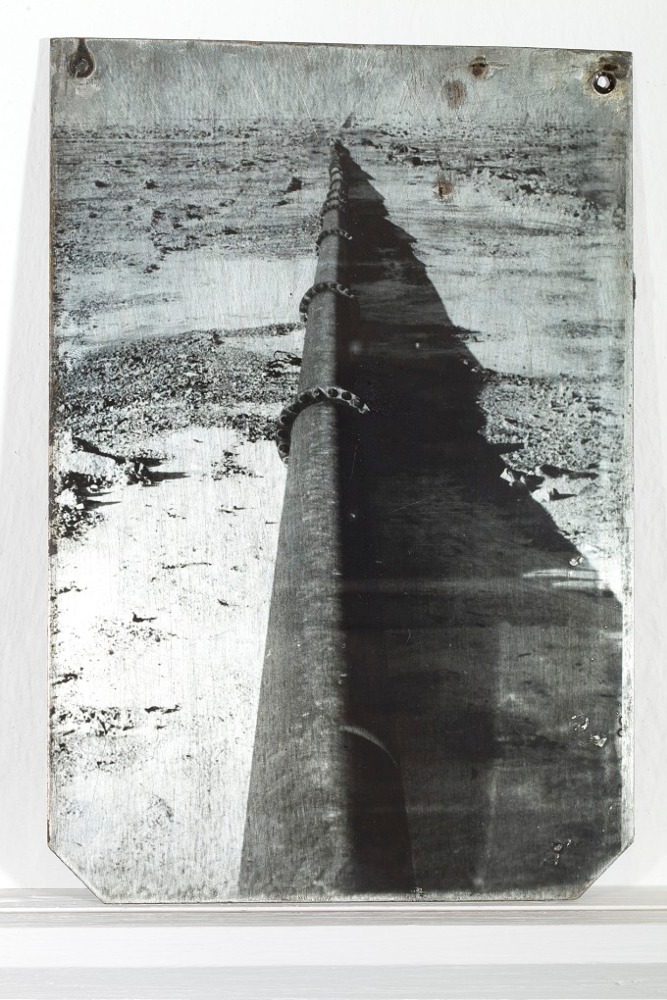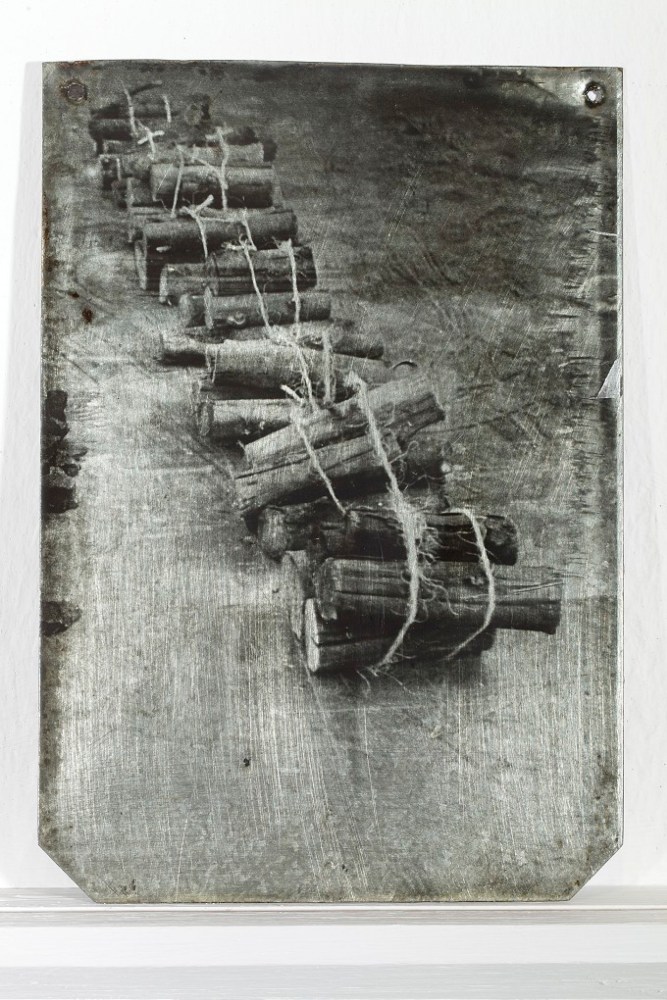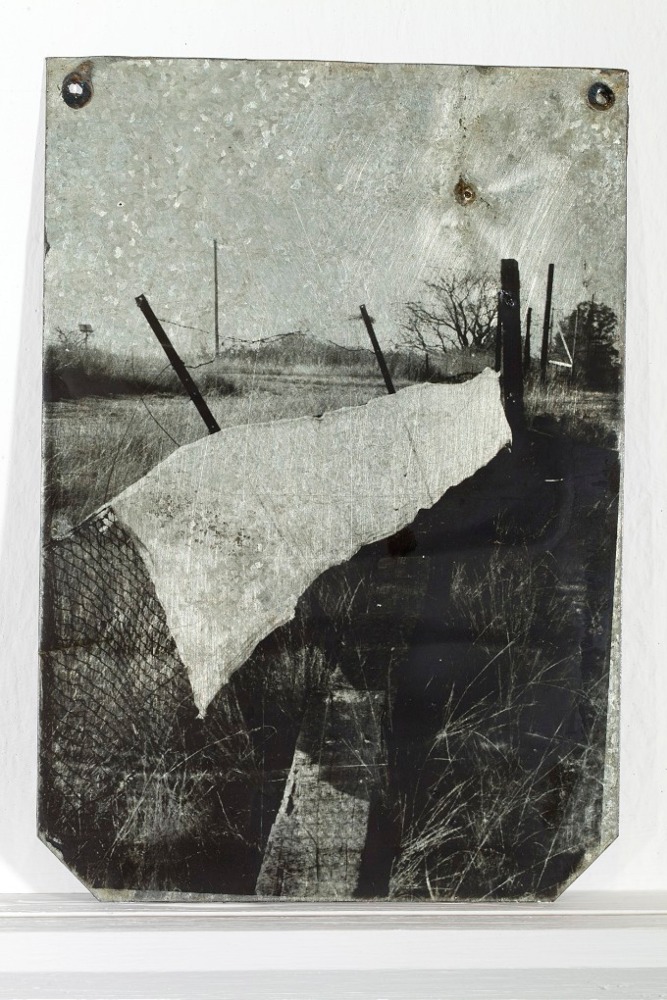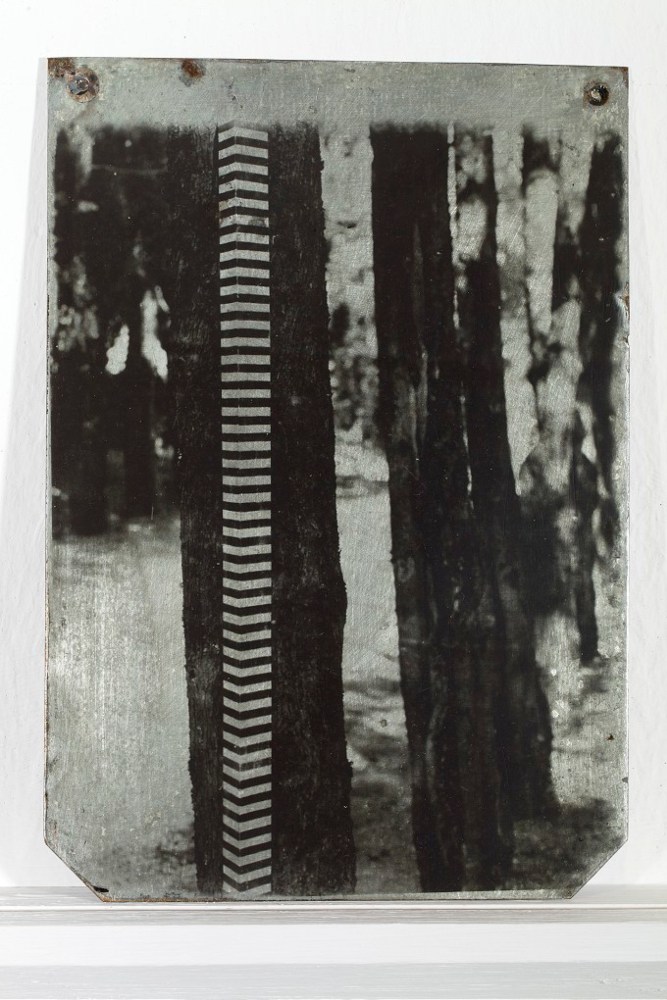Until 26 September
Goodman Gallery Johannesburg
Goodman Gallery X blank projects: alluvium
Goodman Gallery X blank projects: alluvium
Head-Image
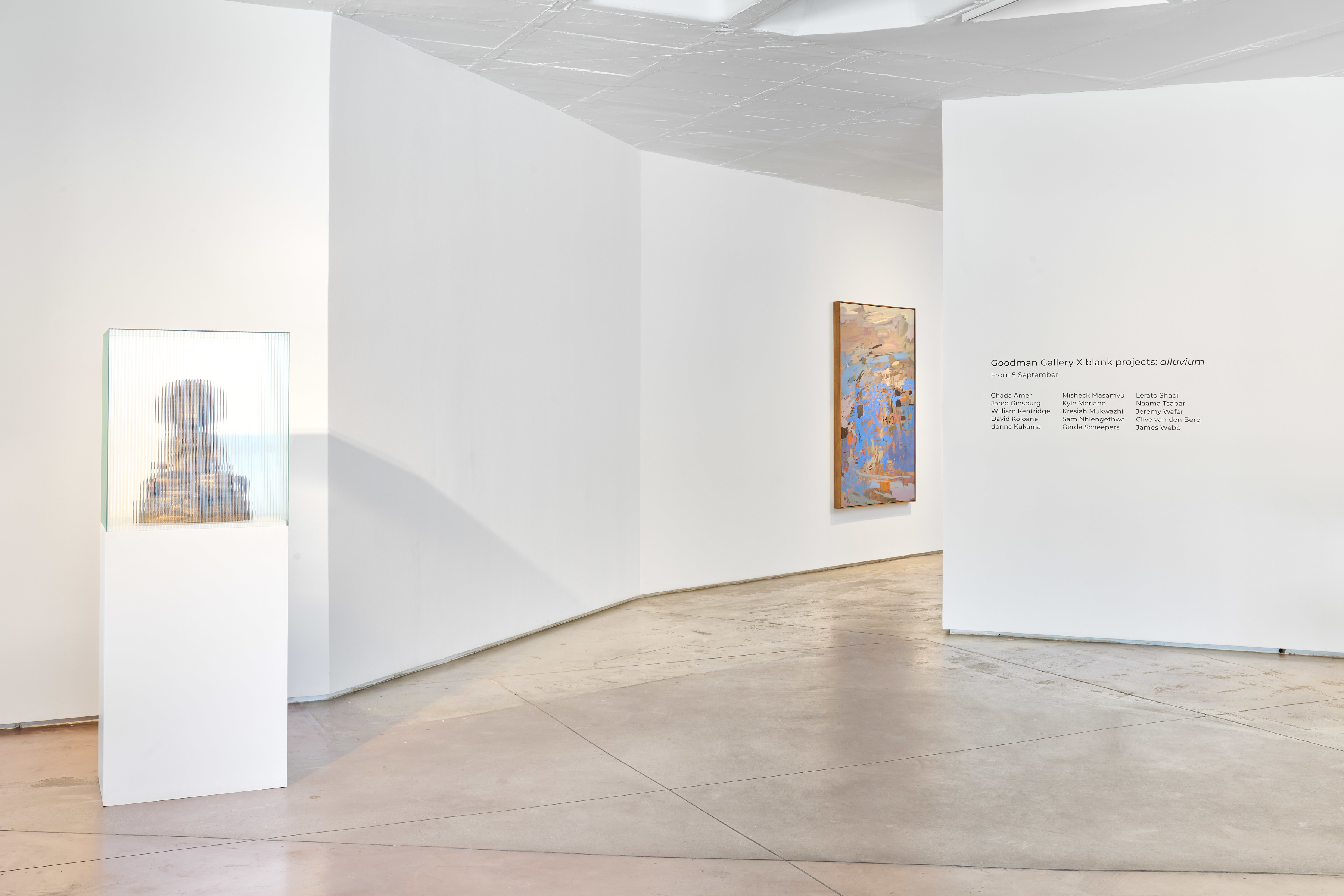
Ghada Amer, Jared Ginsburg, William Kentridge, David Koloane, donna Kukama, Misheck Masamvu, Kyle Morland, Kresiah Mukwazhi, Sam Nhlengethwa, Gerda Scheepers, Lerato Shadi, Naama Tsabar, Jeremy Wafer, Clive van den Berg and James Webb
Goodman Gallery and blank projects are delighted to introduce a collaborative exhibition over Johannesburg’s art season titled ‘alluvium’. With both galleries dedicated to a crosspollination of artistic voices and building a resilient ecosystem, this show enacts the idea of collaboration as a practice.
‘Goodman Gallery X blank projects: alluvium’ takes its cue from the loose clay, sand and earth that is deposited by running water or a stream. Considering ideas around debris as the composition itself, the exhibition incorporates artists across both gallery programmes to explore how artists can gather discarded materials or ephemeral notions into a composition. Through this, psychogeographic cartographies are formed, mapping out and remixing strategies for engaging with and interrogating the world.
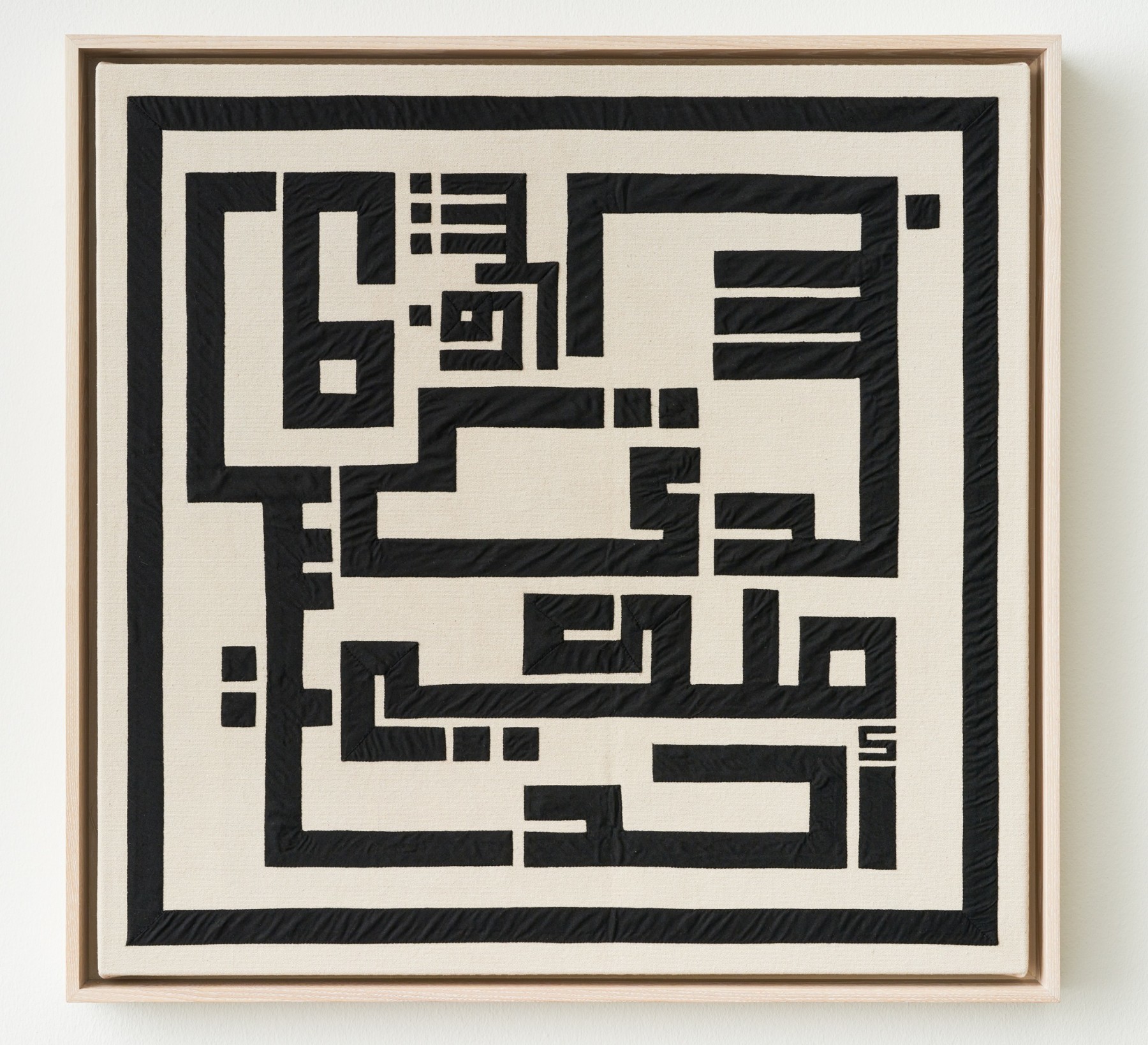
Ghada Amer
MY BODY IS MINE, 2023
Cotton Appliqué on canvas
Frame: 79 x 76,9 cm (31.1 x 30.3 in.)
Unique
Ghada Amer (b. 1963, Cairo) explores the complicated nature of identity as it is developed through cultural and religious norms as well as personal longings and understandings of the self. Recognising both that women are taught to model behaviours and traits shaped by others, and that art history and the history of painting in particular are shaped largely by expressions of masculinity, Amer’s work actively subverts these frameworks through both aesthetics and content.
‘MY BODY IS MINE’ forms part of a larger body of work in which Amer works for the first time with Egyptian textile craft, deploying the voices of Eastern and Western feminist activists within a series of new abstract works: transforming powerful statements by Simone de Beauvoir - “one is not born, but rather becomes, a woman” - and Amina Sboui - “my body belongs to me and it does not represent the honour of anyone” into bold geometric formations that reference the ubiquitous QR code form, a recent visual language that has replaced printed text.
2022/23 saw a major retrospective of Amer’s work titled ‘A Woman’s Voice Is Revolution’, organised by Mucem, it was hosted across three venues in Marseille. Group shows and biennials include: the Whitney Biennial in 2000 and the Venice Biennales of 1999 (where she won the UNESCO Prize), 2005 and 2007. Amer’s mid-career retrospective was held at the Brooklyn Museum of Art in New York in 2008.
Collections include: The Arab Museum of Modern Art, Doha; the Art Institute of Chicago, Chicago; the Barjeel Art Foundation, Sharjah; the Brooklyn Museum of Art, New York; Centre Georges Pompidou, Paris; Crystal Bridges Museum of American Art, Bentonville; the Guggenheim Museum, Abu Dhabi; the Israel Museum, Jerusalem; and the Samsung Museum, Seoul.
The works of David Koloane, donna Kukama, Misheck Masamvu, Lerato Shadi, Jeremy Wafer, Clive van den Berg and James Webb consider sociopolitical and material debris, pointing to their entanglement with emotional wellbeing, historical narratives and the imaginaries that develop around land and landscape. Through the photographs, found objects, layered paint and the inclusion of unconventional art materials such as oil and coffee present across their works, they bring to the surface messy contradictions in how value systems are formed, their persistence and how these are projected into the world.
Following the thread of conceptual materiality, Ghada Amer and Kresiah Mukwazhi apply it to their engagement with the female body and how under patriarchal systems it is leveraged as a site of contestation, power dynamics and resistance. Mukwazhi’s bra straps stitched on canvas and Amer’s textile work speak to a defiance and reclamation of agency. Naama Tsabar, too, transforms textiles, modifying the natural characteristics of material to shift our worldviews and expose the hidden systems that guide them.
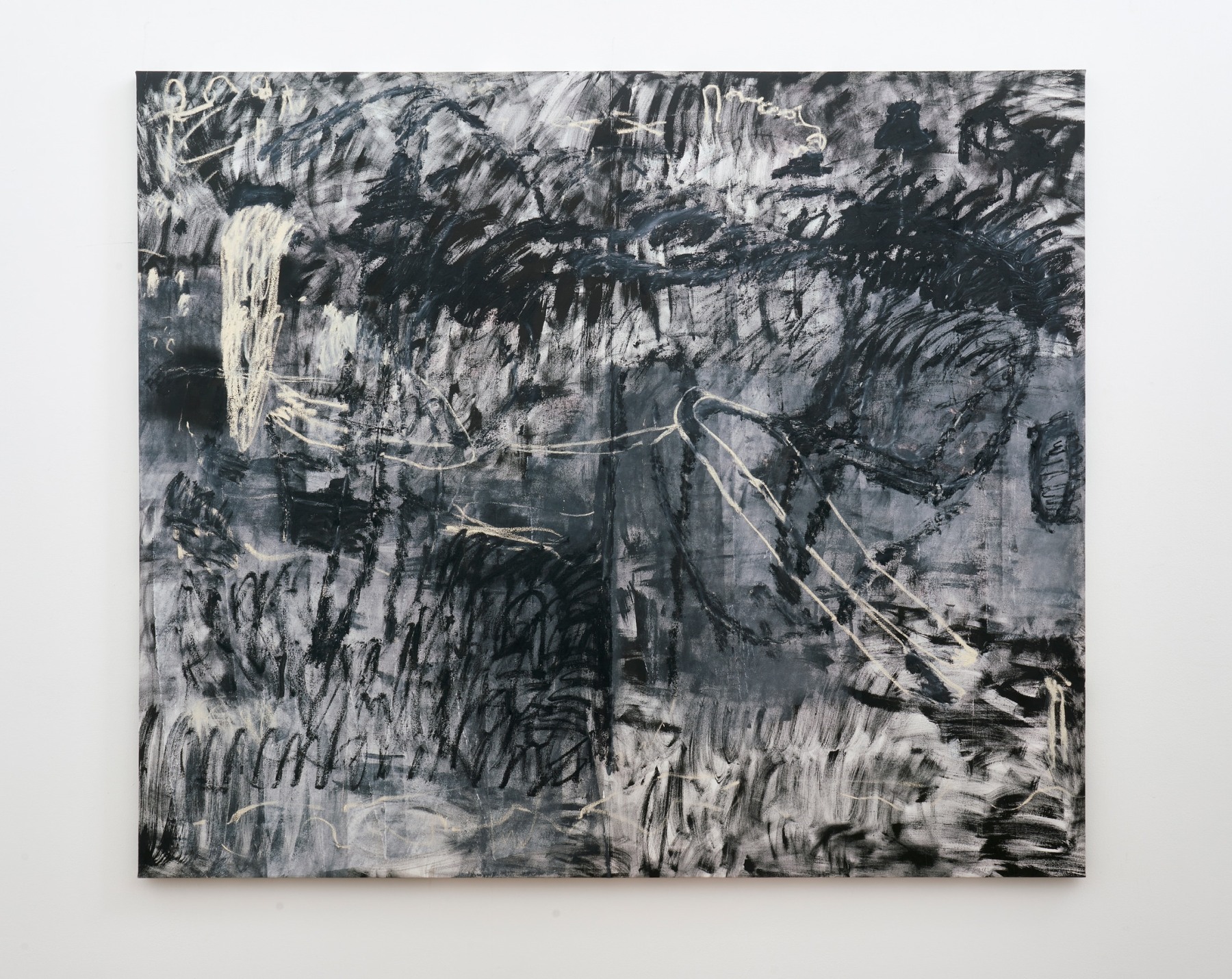
Jared Ginsburg
Untitled (no sleeping), 2021 - 2023)
Oil and mixed media on canvas
Work: 207 x 243 cm (81.5 x 95.7 in.)
Unique
Jared Ginsburg (b.1985, Cape Town) uses art-making to explore alternative modes of knowledge production and transfer. He recognizes art as a tool, a means to test and probe the world, hoping to nurture new strategies for productive engagement. Ginsburg employs a range of media types in his practice, including painting, sculpture, drawing, video and performance. Seeking “indeterminacy or chance operations” in his process, Ginsburg’s studio plays a significant role; at once a lab, an instrument and a character in conversation.
In Ginsburg’s paintings, surfaces are built up in layers; big and small ideas are left to collide. He states: “A moment of clarity (brief and rare) is recorded. Alongside these instances are also the mundane (a list, a recipe) scrawled onto the page, only to be promptly obliterated.” Ginsburg feels at ease marking the surface in this way, knowing everything can be sufficiently hidden, or destroyed, and sometimes, even forgotten.

William Kentridge
Paper Procession VI, 2023
Steel, aluminium, oil paint
Approx: 108 x 44 x 39 cm (42.5 x 17.3 x 15.4 in.)
Edition of 6
William Kentridge (b.1955, South Africa) is internationally acclaimed for his drawings, films, theatre and opera productions. Kentridge’s largest survey exhibition, first seen at the Royal Academy of Arts in London in 2022, is now on view at the Taipei Fine Arts Museum until 1 September. Recently in Venice Kentridge premiered a new nine-episode video series ‘SELF-PORTRAIT AS A COFFEE-POT’ - a site-specific installation curated by long-time collaborator and curator Carolyn Christov Bakargiev at the Arsenale Institute for Politics of Representation. This is on view until 24 November, 2024. In July the artist premiered the theatrical production ‘The Great Yes, The Great No’ at LUMA Arles alongside a substantial solo exhibition titled ‘Je n’attends plus (I am Not Waiting Any Longer)’.
‘Paper Procession VI’ forms part of a set of new hand-painted, aluminium and steel sculptures in vivid colour. The origin of these sculptures are a series of small paper sculptures, made from the torn and coloured pages of a 19th century accounting journal from the Chiesa di San Francesco Saverio in Palermo. This ‘Paper Procession’ speaks to the process of costume-making. During periods of intensive workshops in the making of a theatre production, Kentridge and his collaborators work with paper as a way to think about costumes, and their colours.
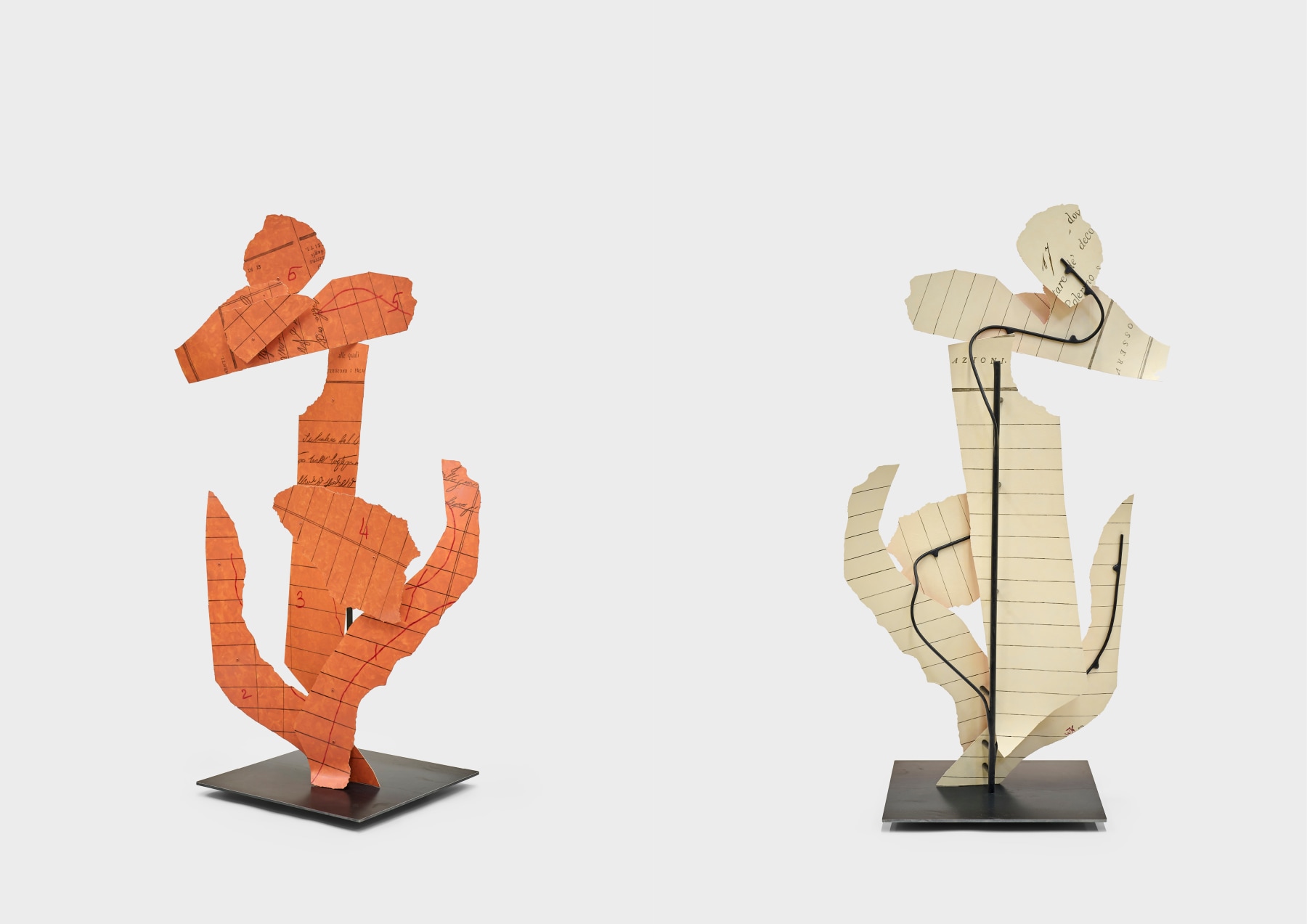
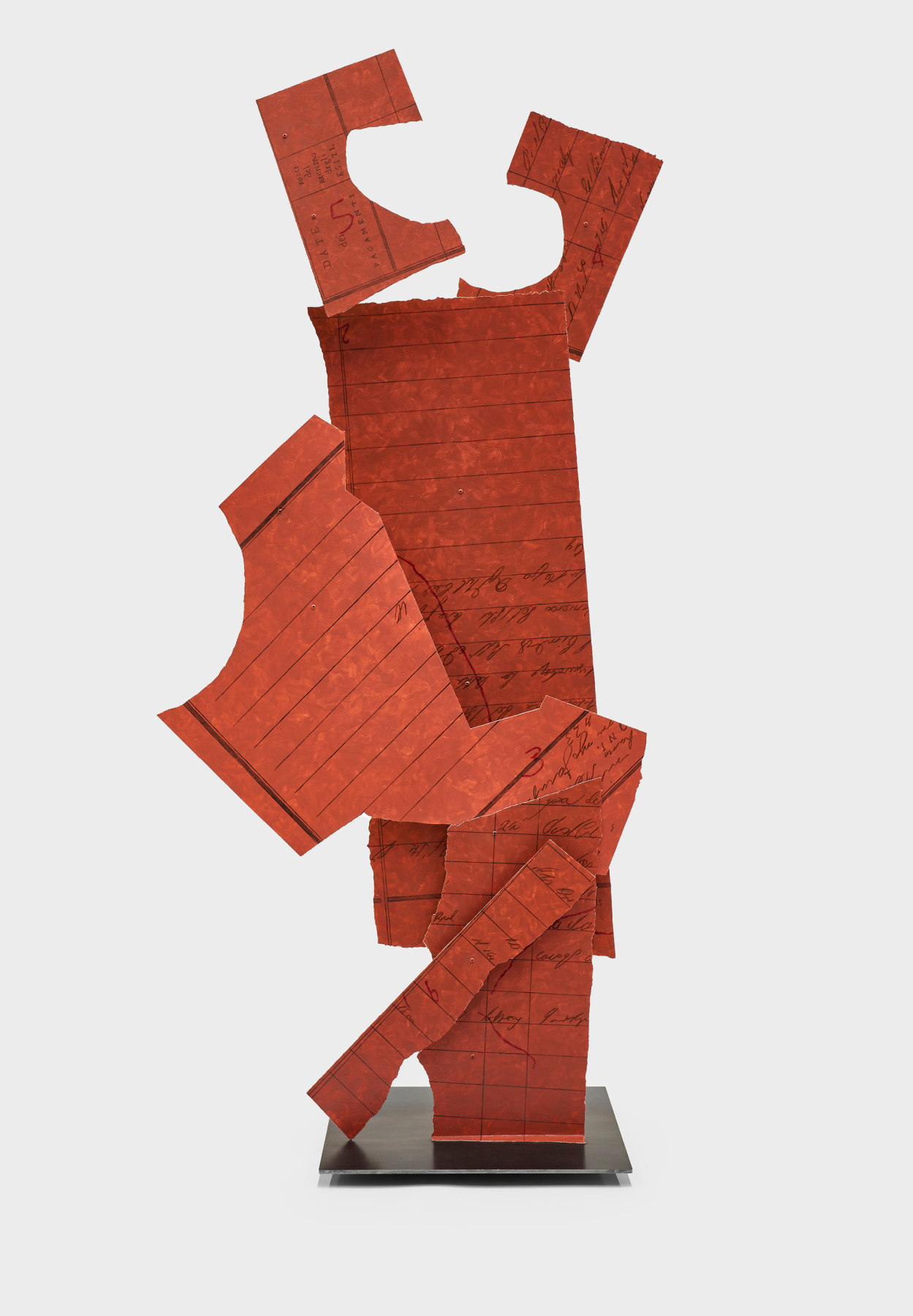
William Kentridge
Paper Procession V, 2023
Steel, aluminium, oil paint
Approx: 124 x 86.5 x 39 cm (48.8 x 34.1 x 15.4 in.)
Edition of 6
Kentridge’s work has been seen in museums across the globe since the 1990s, including the Museum of Modern Art, New York; Albertina Museum, Vienna: Musée du Louvre in Paris, National Museum of Modern and Contemporary Art, Korea; Reina Sofia museum, Madrid, Kunstmuseum in Basel; and Norval Foundation in Cape Town. The artist has also participated in biennale’s including Documenta in Kassel (2012, 2002,1997) and the Venice Biennale (2015, 2013, 2005, 1999, 1993).
Collections include: MoMA, New York; Tate Modern, London; Centre Pompidou, Paris; Haus der Kunst, Munich; Sharjah Art Foundation, Sharjah; National Museum of Modern Art, Kyoto; Guggenheim, Abu Dhabi and Zeitz MoCAA, Cape Town.
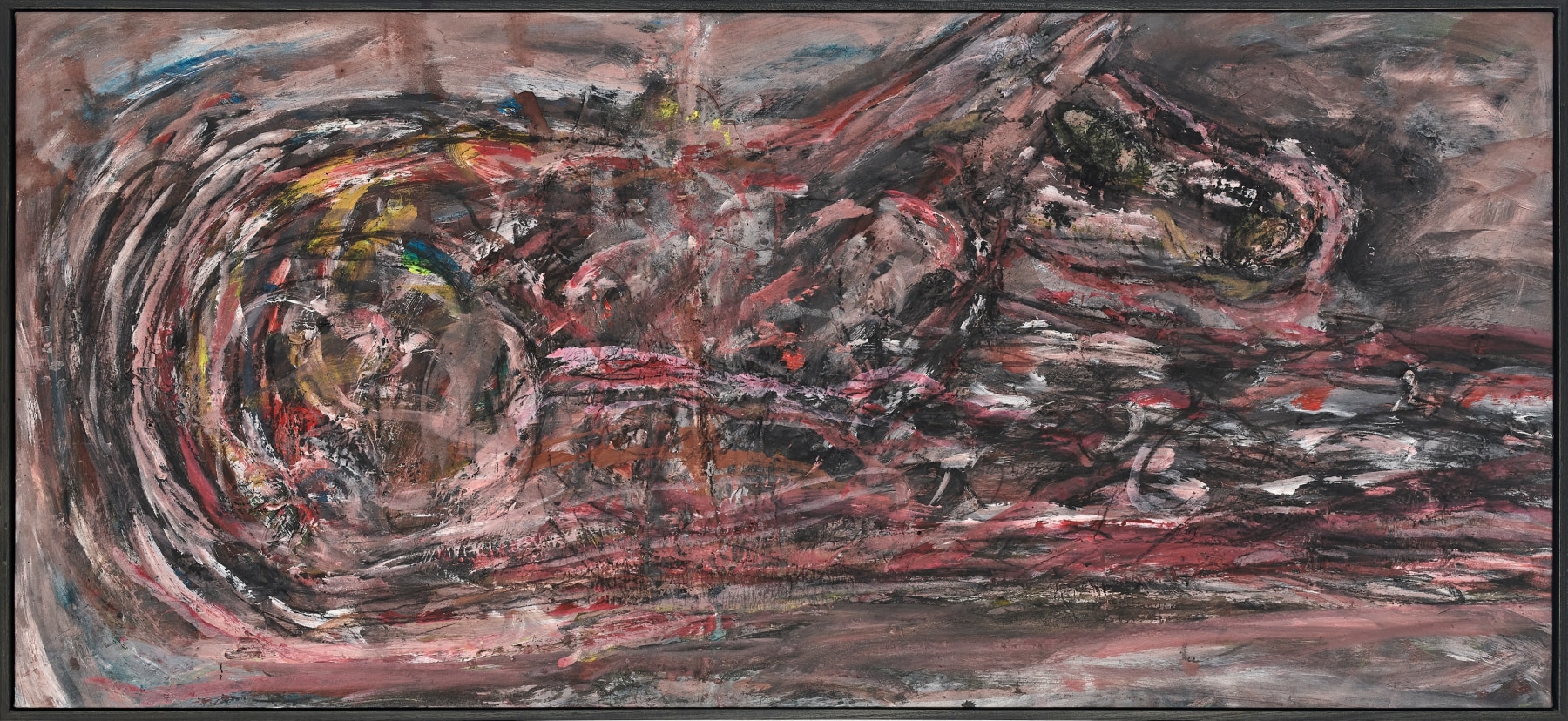
David Koloane
Anatomy, 2019
Mixed media on canvas
Frame: 80 x 172 x 4.5 cm (31.5 x 67.7 x 1.8 in.)
Unique
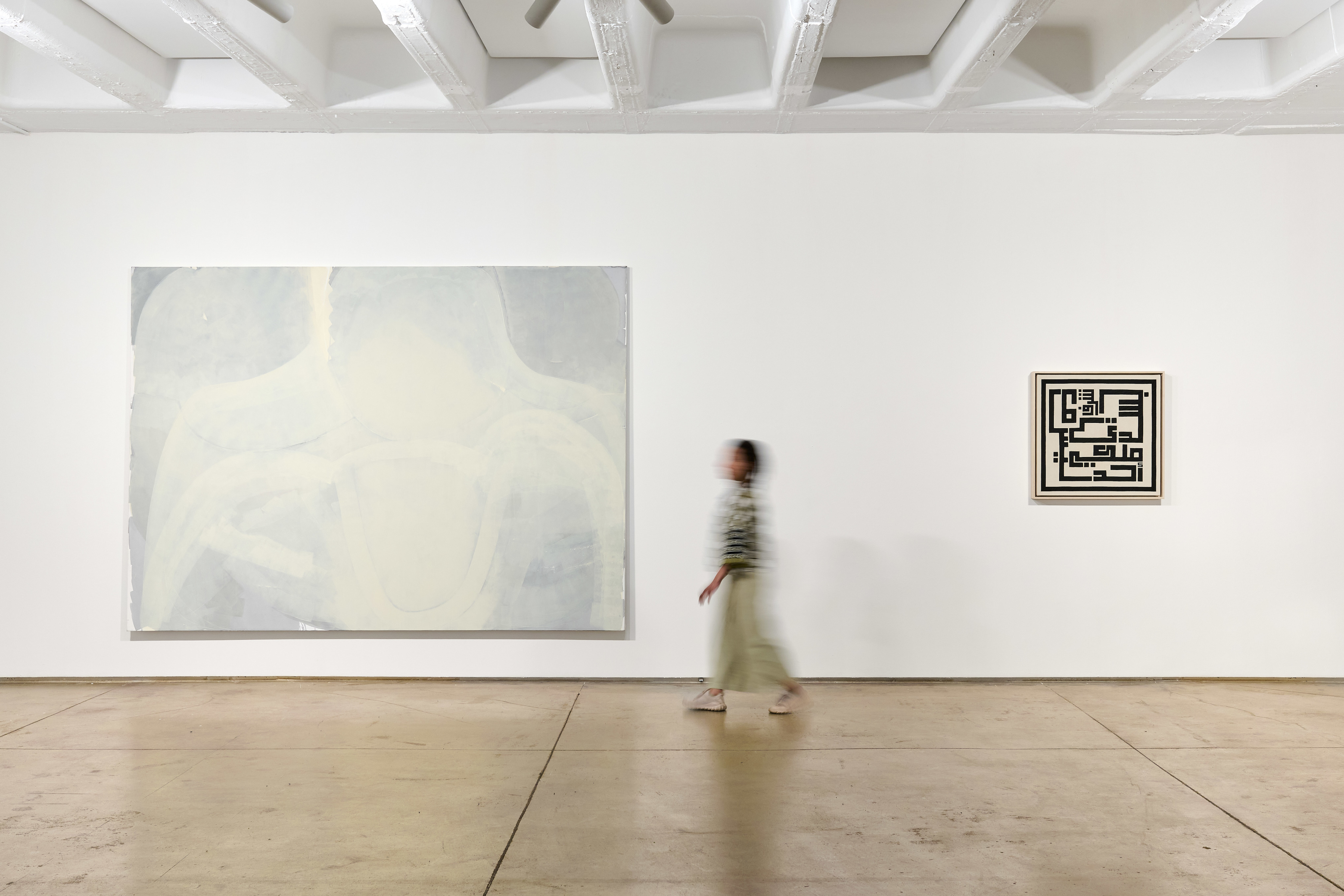
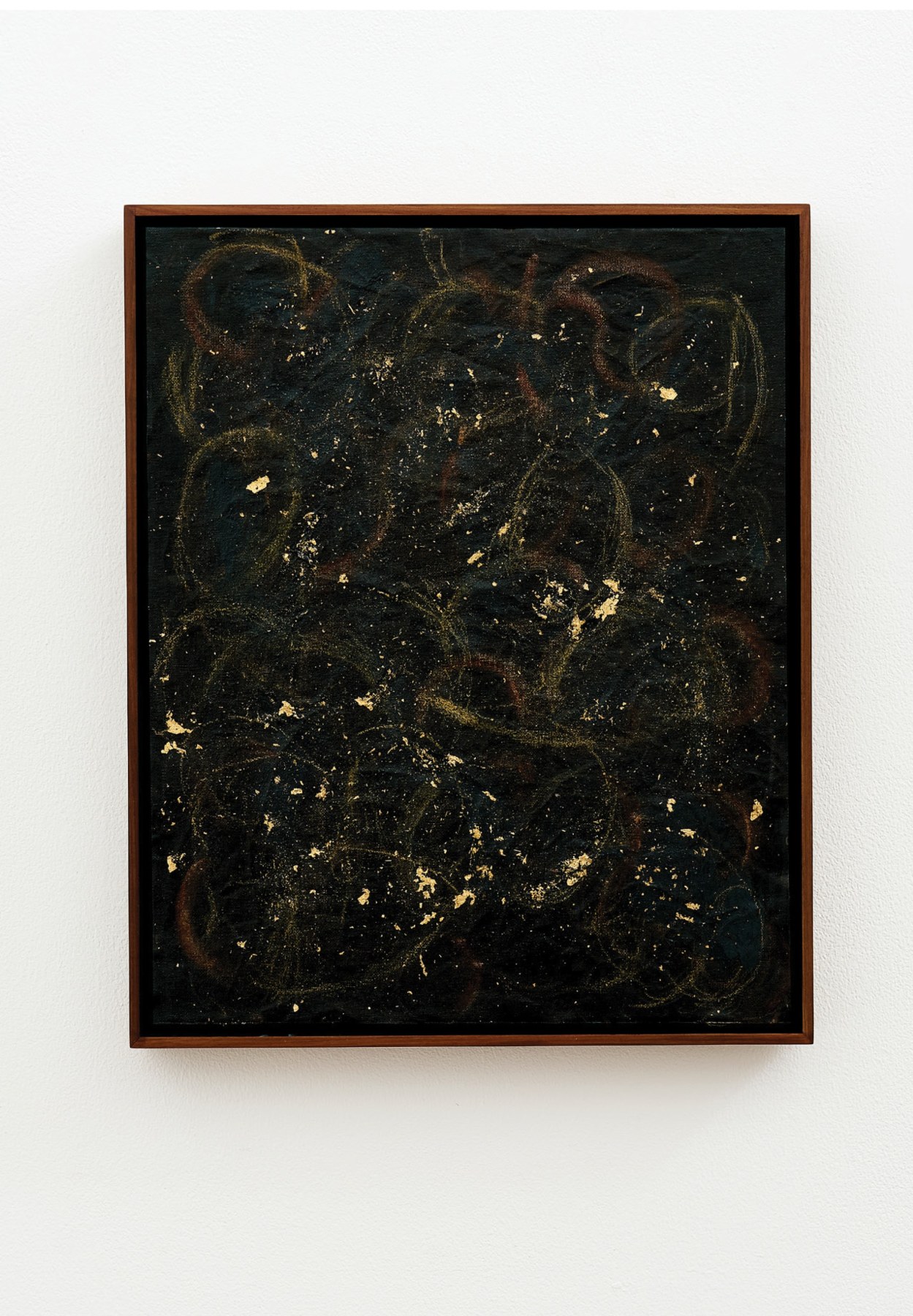
donna Kukama
a ghOst of a ghOst of a ghOst, 2020 - 2023
Acrylic, gold leaf, pastel, wind and acrylic gel,
medium on canvas
Work: 53.5 x 44 cm (21.1 x 17.3 in.)
Unique
donna Kukama (b.1981, Mahikeng) is an interdisciplinary artist whose practice engages performance art as a tool for creative research. Her practice takes on a form that is experimental, applying methods that are deliberately undisciplined to question how histories are narrated and subvert how value systems are constructed, instead centering methods and perspectives that originate from the Global South. Whether written, drawn, performed, or sculptural, Kukama’s works can be understood as gestures of poetry that speak to us about time and memory while presenting alternate realities where both the material and immaterial coexist to remember less-told stories, and engage erasures within the contemporary history of South Africa and beyond.
In her works on canvas, one is enraptured by an alchemy of narrative, complexity and lyricism — poetry as method and history through verse. The paintings render themselves as a portal to a continuous and unconscious flow of thought and feeling — an interrupted recollection of wishes, provocations and reactions. They unearth a tight relationship where memory (past) and imagination (future) are tangled up through (in)discernible scrawls. Kukama’s paintings present a visual dialogue animated through a rejection of absolute translatability where only the titles communicate the message — even then, the meaning is coded, opaque, impenetrable. A fluency in obscurity becomes the tool through which full expression can be achieved without complete revelation. It functions as an embrace of the unavoidable slippage between knowing and unknowing.
Following the thread of conceptual materiality, Ghada Amer and Kresiah Mukwazhi apply it to their engagement with the female body and how under patriarchal systems it is leveraged as a site of contestation, power dynamics and resistance. Mukwazhi’s bra straps stitched on canvas and Amer’s textile work speak to a defiance and reclamation of agency. Naama Tsabar, too, transforms textiles, modifying the natural characteristics of material to shift our worldviews and expose the hidden systems that guide them.
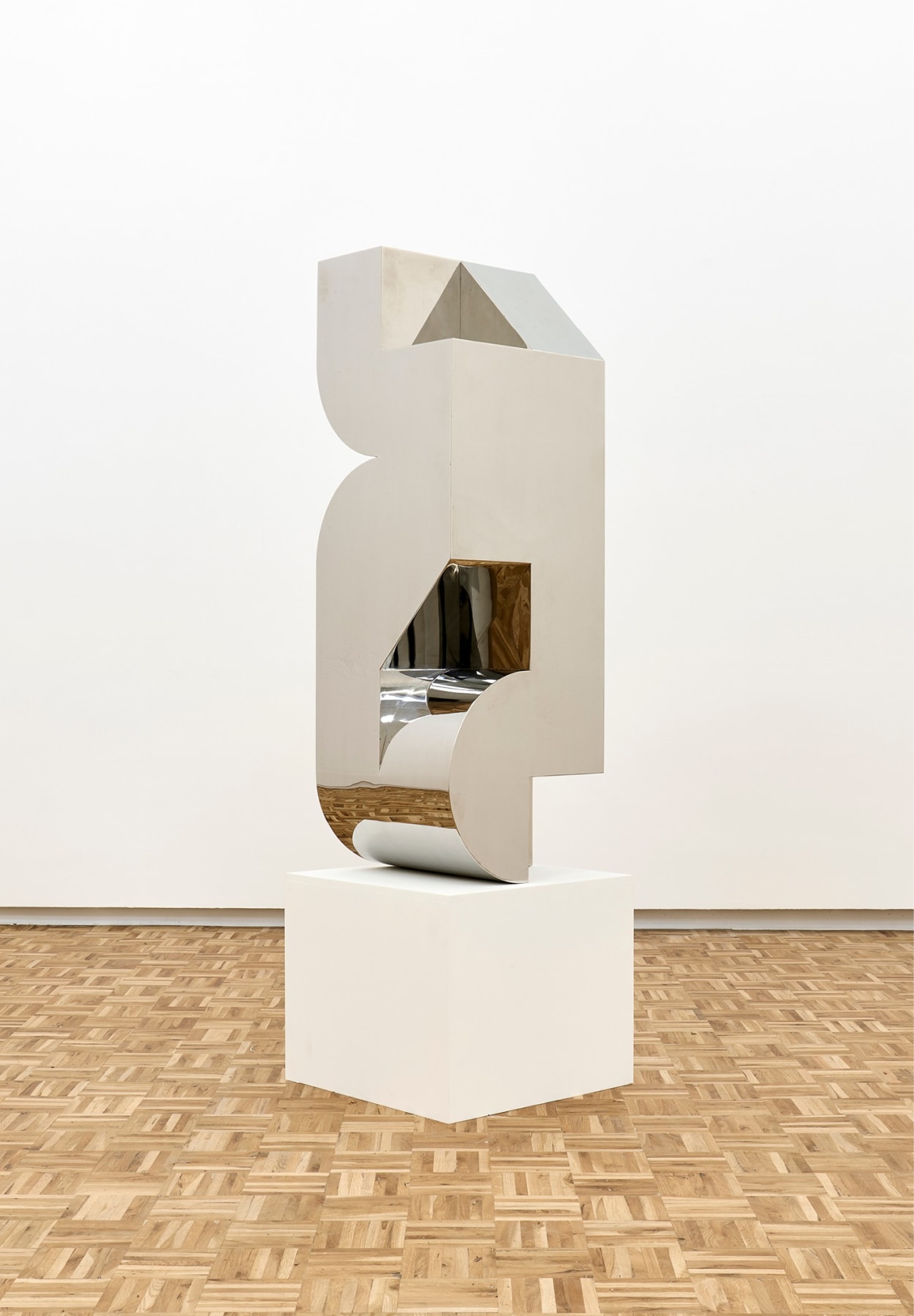
Kyle Morland
Coalesced, 2024
Stainless steel
Work: 150 x 50 x 50 cm (59.1 x 19.7 x 19.7 in.)
Plinth: 50 x 60 x 60 cm (19.7 x 23.6 x 23.6 in.)
Unique
Kyle Morland (b.1986, Johannesburg) is an interdisciplinary artist working primarily in sculpture, photography and video. His practice centres around the manipulation of material, experimentation with form and spatial relations. Morland realises his ideas within the context of self-imposed formal constraints — responding to challenges he sets for himself in creating the work. His sculptures, in particular, express a playful engagement with proportion, balance and dimensionality.
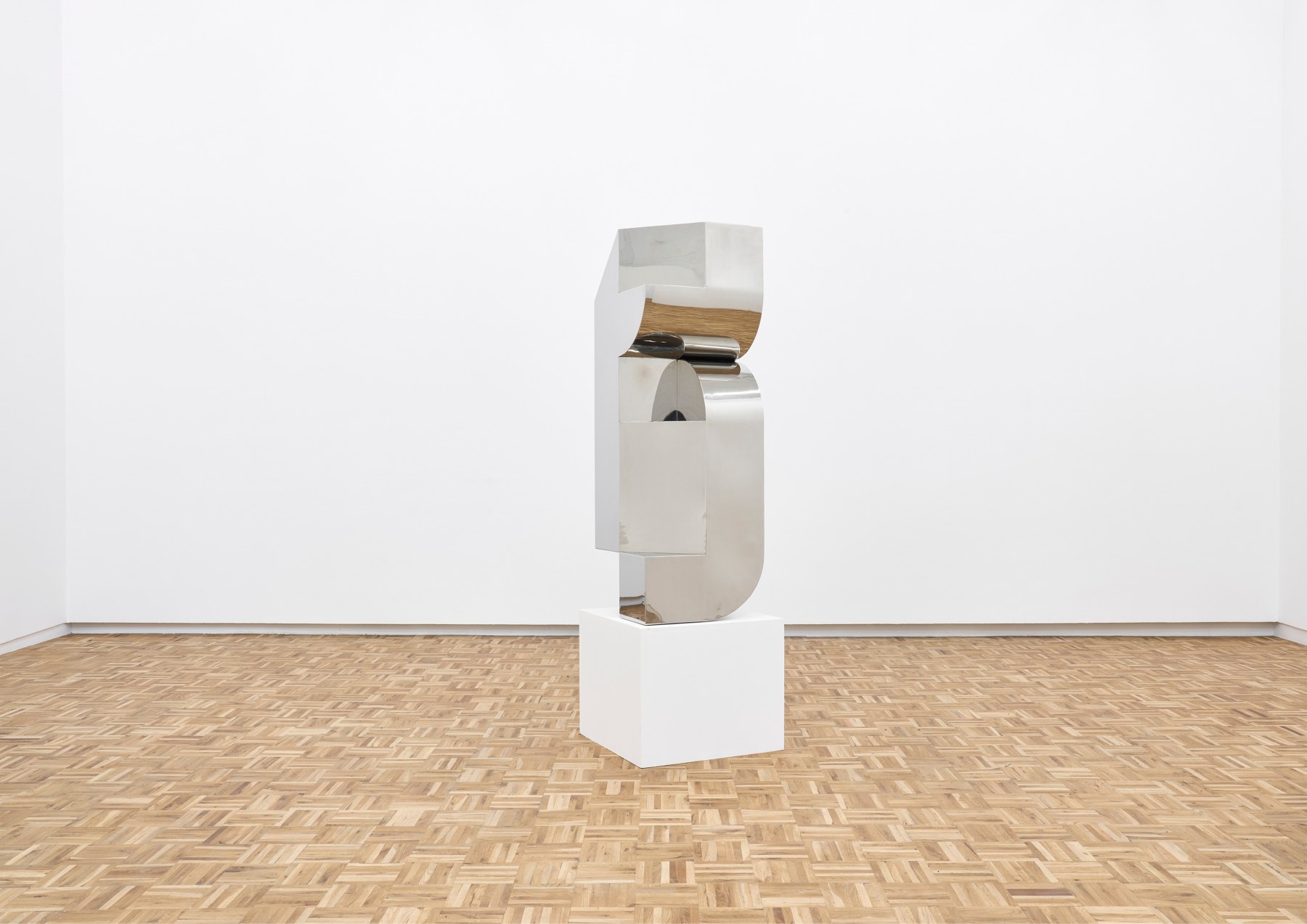
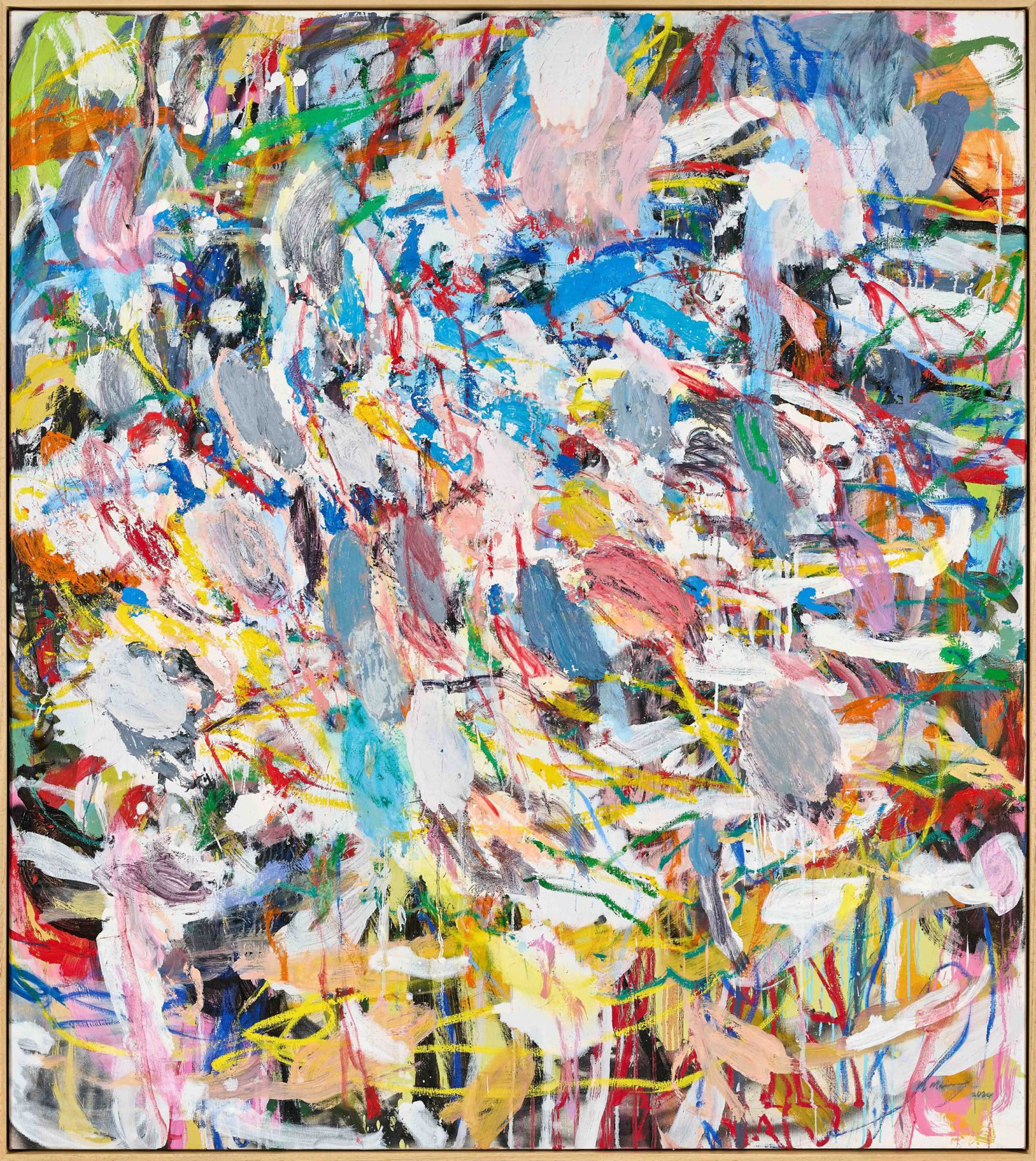
Misheck Masamvu (b. 1980, Penhalonga) is widely regarded as one of the leading painters in his home country with his work exploring and commenting on the socio-political setting of post-independence Zimbabwe. Trained in Germany, Masamvu continues to live and work in Zimbabwe which provides rich inspiration for his gestural painting.
‘Sweet Tooth’ forms part of a body of work that combines striking colour with a distinct expressionist style to establish a grammar of chaotic compositions, gestural brushwork and perpetually altered or mutated figures often depicted in states of flux or transformation.
Notable solo and group exhibitions include ‘Translations: Afro-Asian Poetics’, The Institutum, Singapore (2024); ‘Inside Out’, Fondation Grandpour l’Art, Geneva (2022); ‘Witness: Afro Perspectives’, El Espacio 23, Miami (2020); ‘Allied with Power: African and African Diaspora Art from the Jorge M. Pérez Collection’, Pérez Art Museum Miami, Miami (2020); and ‘Two Together’, Zeitz Museum of Contemporary Art Africa, Cape Town (2020).
Museum exhibitions and biennales include The ‘t’ is silent, 8th Biennial of Painting, Museum Dhondt-Dhaenens, Sint-Martens-Latem (2022); STILL ALIVE, 5th Aichi Triennale, Aichi (2022), NIRIN, 22nd Sydney Biennale, Sydney (2020), the 32nd Bienal de São Paulo (2016).
Selected collections include: A4 Arts Foundation, Cape Town; Braunsfelder Family Collection, Cologne; COMMA Foundation, Brussels; Igal Ahouvi Art Collection, Tel Aviv; Khouri Art Foundation, Dubai; Perez Art Museum, Miami; Pigozzi Collection, Geneva; Taguchi Art Collection, Tokyo; Ueshima Museum, Tokyo; United States National Embassies Permanent Collection, Washington DC; X Museum, Beijing; and Zeitz Museum of Contemporary Art Africa, Cape Town.
Kresiah Mukwazhi (b.1992, Harare). Working with textile collage, installation, performance and video, Mukwazhi examines the politicisation and instrumentalization of the female body as a contested site upon which the power dynamics of patriarchal society are played out. In recent works, she explores the underlying structures of systemic gender-based violence and deconstructs narratives that marginalise women in Zimbabwean society. By challenging cultural norms of femininity and taboos related to female agency, Mukwazhi highlights the importance of addressing latent forms of patriarchy. Her practice is an expression of her commitment to solidarity, empowerment, and care for marginalised communities and strives to provide a platform for resistance and self-empowerment.
‘Chenuramakwara’ is composed of hundreds of bra straps stretched across and stitched to canvas. Working with this conceptually loaded material to evoke the associated ideas of sex and control, Mukwazhi challenges the cultural norms and taboos imposed on women and their bodies in order to address latent forms of patriarchy and structural violence. She states: “In my work I refer to those unsung indigenous acts or rituals that show feminine power and the deep connection that women have to the land. When a woman, especially an older woman, strips down her clothes angrily, the land hears her and stops the rain until she is appeased. This is where the bra or undergarment comes to represent a form of resistance and a medium to bring such empowering knowledge to light.”
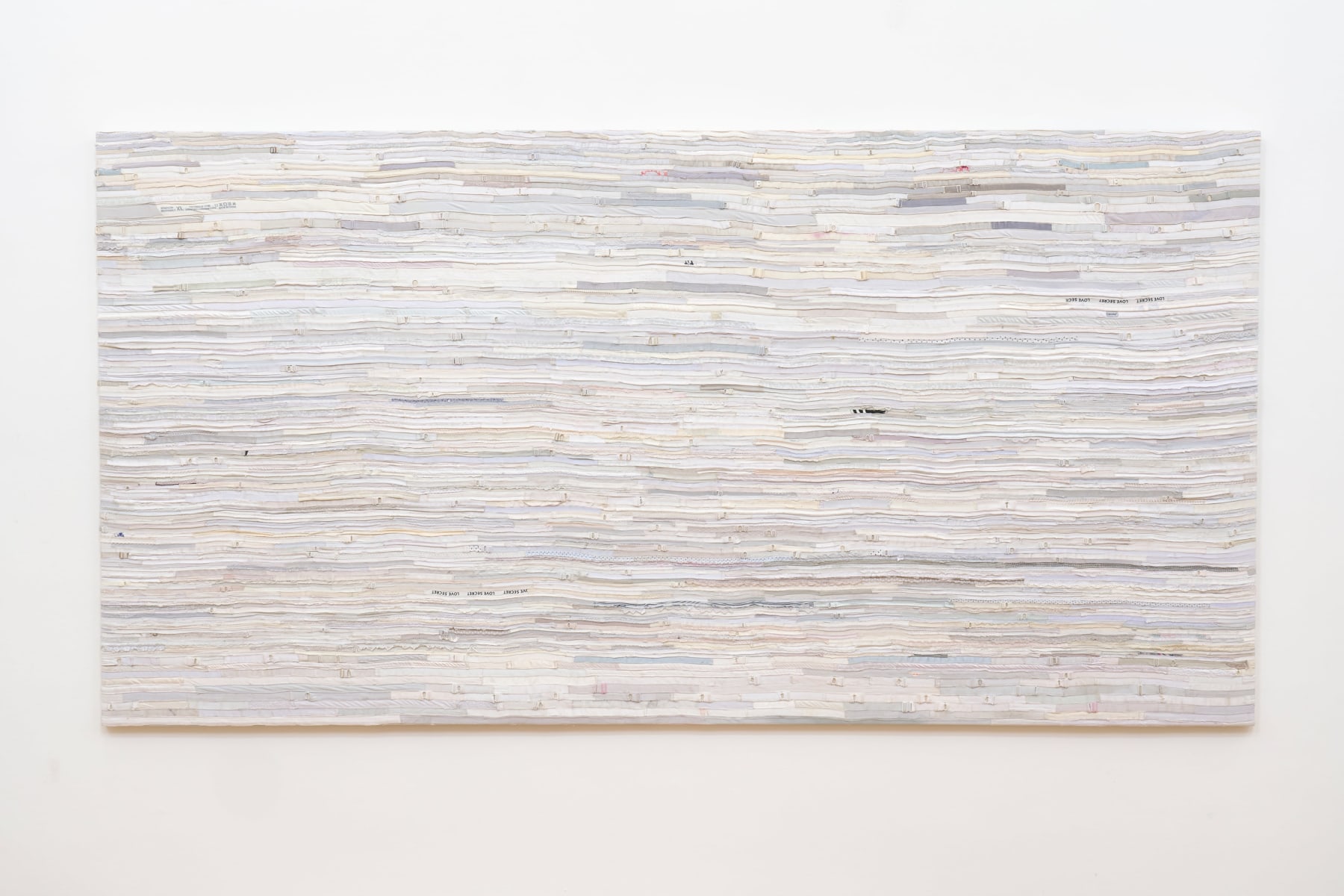
Kresiah Mukwazhi
Chenuramakwara, 2024
Bra straps on canvas
Work: 165 x 321 cm (65 x 126.4 in.)
Unique
Jared Ginsburg, William Kentridge, Kyle Morland and Gerda Scheepers find their grounding in a process of cutting, pasting, and remixing. This produces for each artist a distinct visual vocabulary built on exploratory, experimental and contextually engaged work. Similarly, Sam Nhlengethwa’s non-figurative paintings embrace an intuitive sense of the formal elements, including colour and composition.
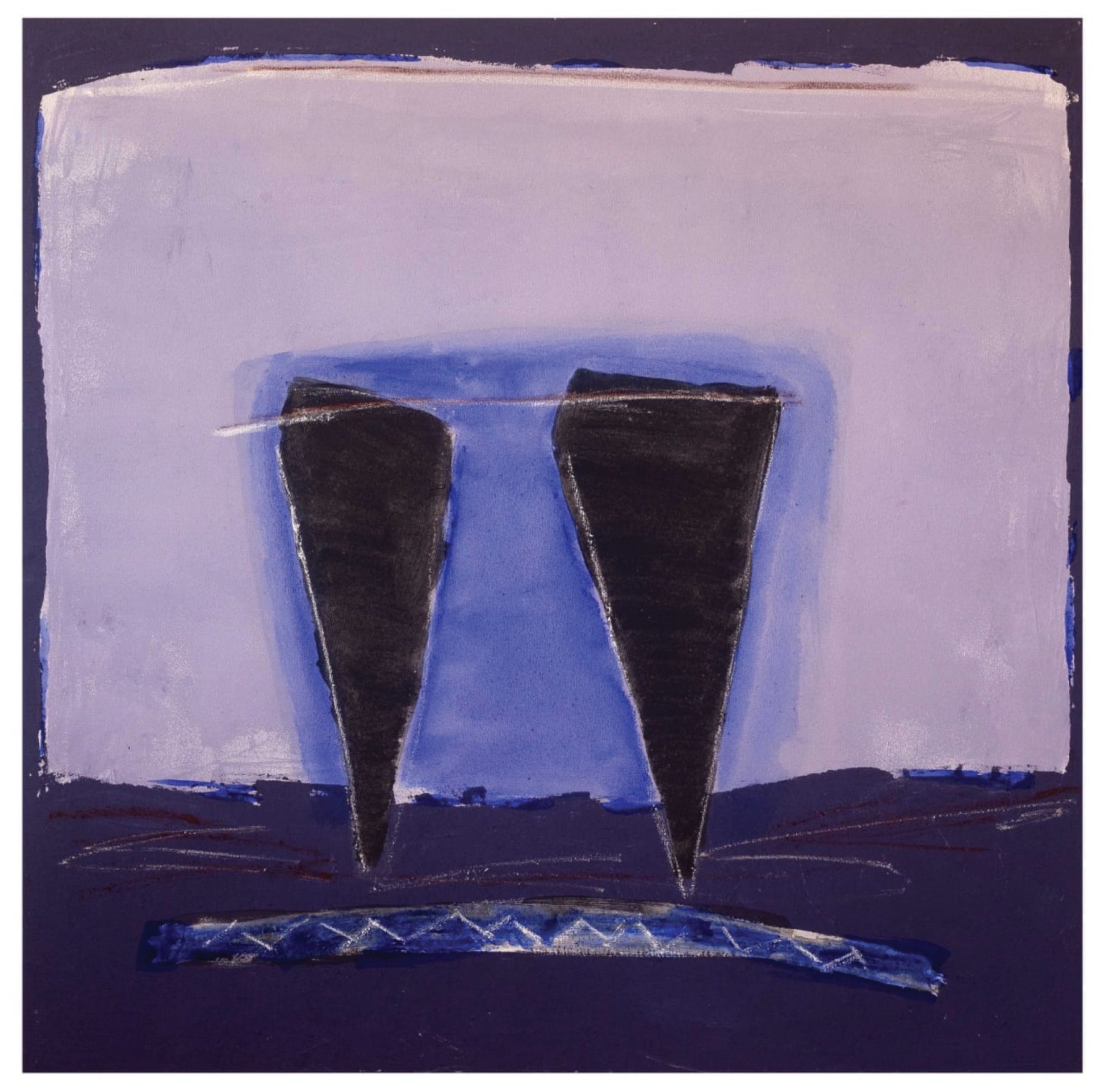
Sam Nhlengethwa
Black Triangles, 2024
Mixed media on canvas
Work: 120 x 120 cm (47.2 x 47.2 in.)
Unique
Sam Nhlengethwa (b. 1955, Payneville, Springs) part of a pioneering generation of late 20th century South African artists whose work reflects the sociopolitical history and everyday life of their country. Through his paintings, collages and prints Nhlengethwa has depicted the evolution of Johannesburg through street life, interiors, jazz musicians and fashion.
‘Black triangles’ follows work first introduced into his practice in the 1980s when the artist started to explore colour and non-figurative forms. Work of this period displayed his natural and intuitive sense of formal elements of colour and composition.
Selected solo exhibitions include: ‘Art Meets Fashion’, Goodman Gallery, Johannesburg (2023); ‘Jazz and Blues at night’, Goodman Gallery, London (2021); ‘Leeto: Print retrospective’, Wits Art Museum, Johannesburg (2019); ‘IN FOCUS: SAM NHLENGETHWA’, The University of Michigan Museum, Michigan (2017); ‘Life, Jazz and Lots of Other Things’, SCAD Museum of Art, Savannah, Georgia (2014); ‘Townships Re-visited’, Goodman Gallery, Johannesburg (2006); and ‘Homage to Jazz’, Standard Bank Young Artist Award travelling show, South Africa (1994-5).
Group exhibitions include: ‘Through an African Lens: Sub-Saharan Photography from the Museum’s Collection’, Museum of Fine Arts, Houston (2020). Travelling to Museo de Arte Miguel Urrutia until 11 March 2024; ‘TRANS’, University of Johannesburg, Johannesburg (2018); ‘BEYOND BORDERS: GLOBAL AFRICA’, The University of Michigan Museum, Michigan (2018); ‘South Africa: The Art of a Nation’, British Museum, London (2017); ‘New Revolutions: Goodman Gallery at 50’, Goodman Gallery, Johannesburg (2016); Contemporary Art / South Africa, Yale University Art Gallery (2014); and ‘Imaginary Fact: Contemporary South African Art and the Archive’, South African Pavilion, 55th la Biennale di Venezia, Venice (2013)
Collections include: Museum of Fine Arts Houston, Houston; World Bank, Washington D.C; Botswana Art Museum, Gaborone; Anglo American, Johannesburg; Iziko South African National Gallery, Cape Town; Johannesburg Art Gallery, Johannesburg; Nelson Mandela Foundation; Johannesburg; and Durban Art Gallery, Durban.
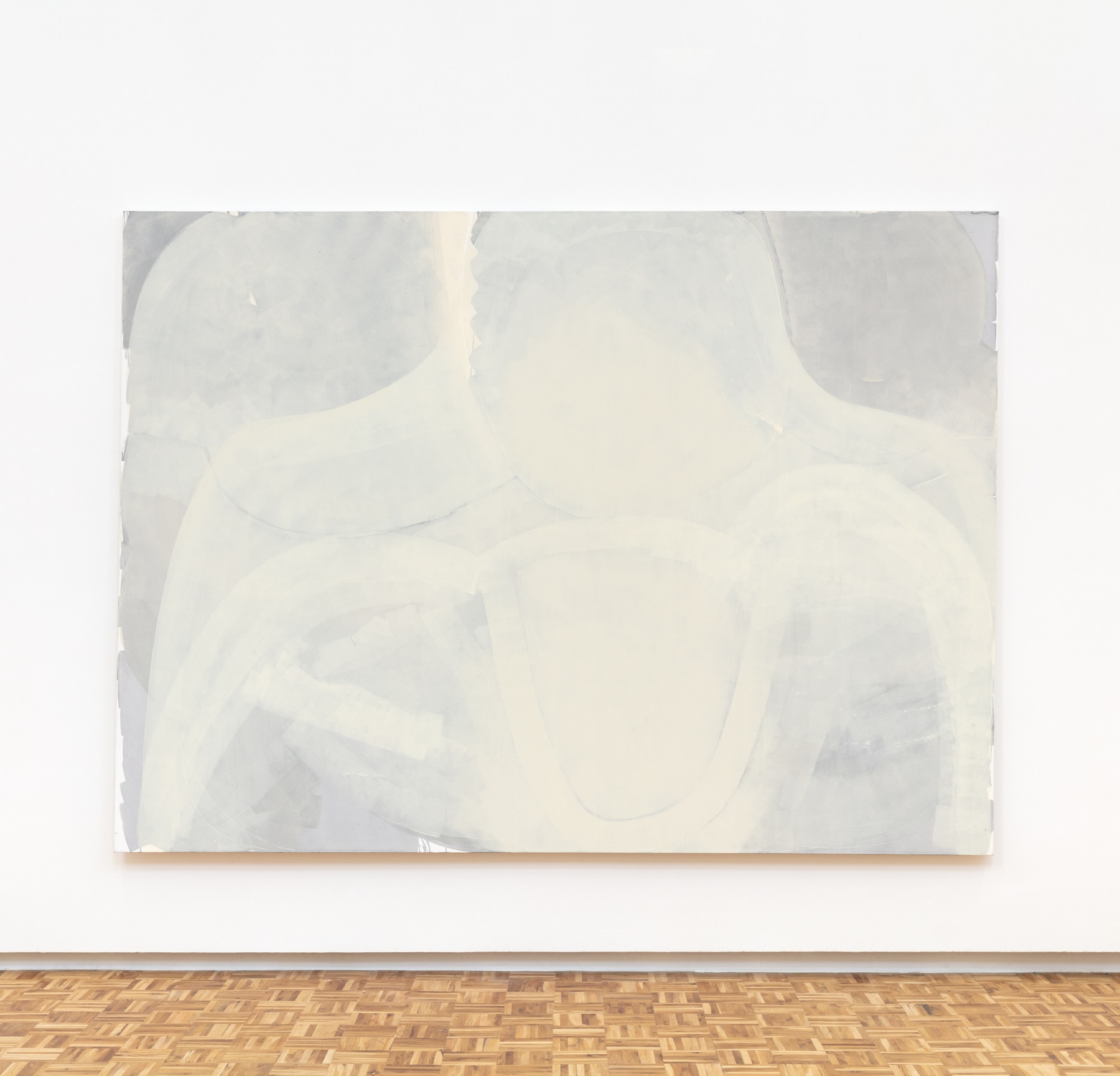
Gerda Scheepers
COPYSHOP GOD, 2024
Acrylic and acrylic ink on canvas
Work: 220 x 300 cm (220 x 300 in.)
Unique
Gerda Scheepers (b.1979, Tzaneen). By applying imagery as short-hand for both her own art making process or specific (cultural) signs and figurations, Gerda Scheepers explores the medium of painting. Content and formal elements of painting are remixed through cut, copy and paste with the results actively pursuing ambiguity. Her paintings, as well as her sculptures, operate like devices for containment that, ultimately crucially, fail to contain. Scheepers delves into the techniques of collage and decoupage, using them as visual and linguistic instruments to disrupt the continuum of the familiar and enable a continuum between apparently disparate registers. Simultaneously, she employs collage as a tool to didactically, and sometimes humorously, imitate the brutal fragmentation brought on by life’s daily efforts. In Scheepers’ words, “the studio functions somehow as a capsule, where possibilities and restrictions play themselves out.”
About Scheepers’ paintings, Keely Shinners writes: “These works, primarily made from acrylic and acrylic inks on canvas, take pleasure in being under covers. They operate in the world of nostalgia. [...] At first glance, Scheepers’ paintings may appear to be mono- or dichromatic. Upon closer inspection, however, one notices several laminae hidden underneath the surface colour.”
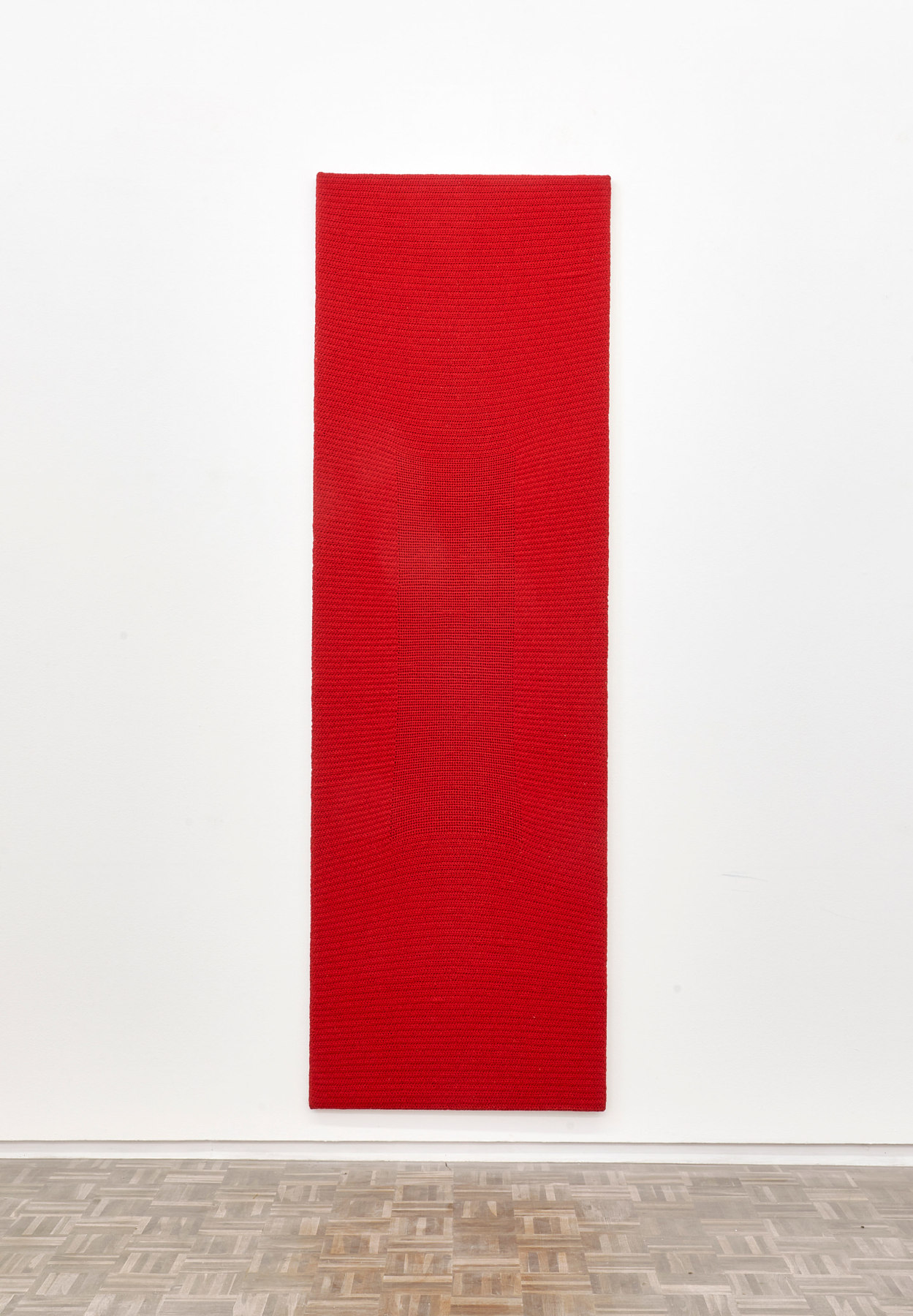
Lerato Shadi
Series #2, 2020
Virgin wool on raw linen
Work: 270 x 85 cm (106.3 x 33.5 in.)
Unique
Lerato Shadi’s (b. Mahikeng) work challenges common assumptions to critique Western notions of history and make visible that which is invisible or overlooked. Working across video, performance and installation, and often employing repetitive processes, she argues the importance of centering - not just including - the marginalised body as a main figure of narrative experience. By placing herself at the forefront of her work, Shadi deals with the politics of cultural erasure and structural exclusion. She states: “It serves to challenge myself, and hopefully my audience as well, in how I/we are complicit in the violence of historical erasure by not fighting for a more inclusive and accurate historical narrative. I realised that – by just blindly or lazily accepting an inaccurate history – I would be sanctioning the problematic dominant narrative with my own inactivity.”
Made from virgin wool on raw linen, ‘Series #2’ (whose title is yet to announce itself) is a return to performativity. Mounted on the wall and resembling a doorway, the work has a considerable presence. Movement is the first language as the work is informed by small repetitive gestures accumulated over time. The work is connected to the process of fasting, which Shadi uses as a method to remind the body to pay attention. In this sense, the body is not merely a porous absorbent but it works to produce its own forms of knowledge.
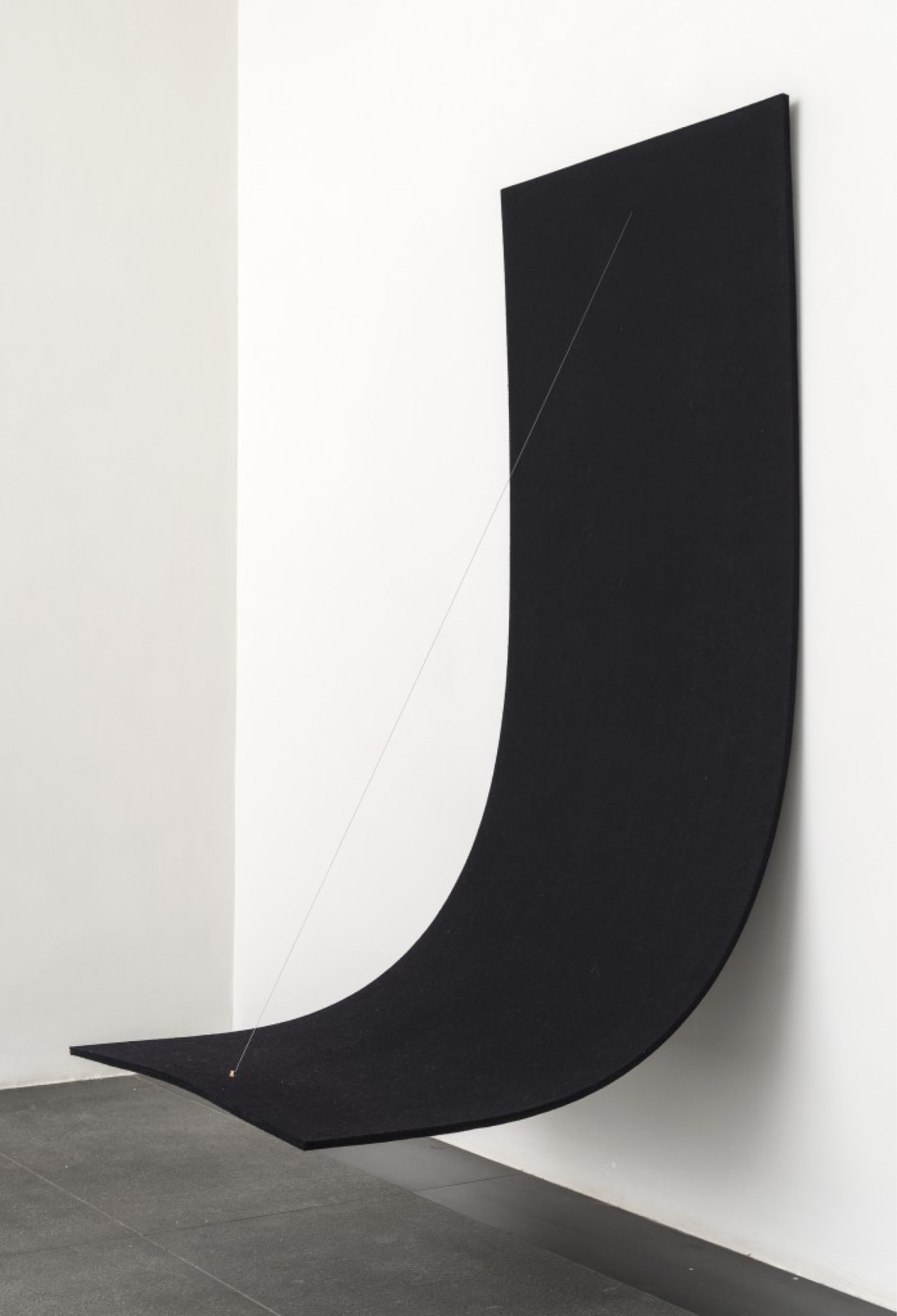
Naama Tsabar
Work On Felt (Variation 7), Black, 2015-2016
Carbon fiber, epoxy, wood, felt, microphone, guitar amplifier
Work: 190.5 x 166.4 x 90.2 cm (75 x 65.5 x 35.5 in.)
Unique
Naama Tsabar’s (b. 1982, Tel Aviv, Israel) practice fuses elements from sculpture, music, performance and architecture. Her interactive works expose hidden spaces and systems, reconceive gendered narratives, and shift the viewing experience to one of active participation. Tsabar draws attention to the muted and unseen by propagating sound through space and sculptural form. Between sculpture and instrument, form and sound, Tsabar’s work lingers on the intimate, sensual and corporeal potentials within this transitional state. Collaborating with local communities of female identifying and gender non-conforming performers, Tsabar writes a new feminist and queer history of mastery. Tsabar has her first institutional solo exhibition at Hamburger Bahnhof until 22 September 2024.
In this ongoing series ‘Work On Felt’, Naama Tsabar transforms raw industrial felt into modifiable stringed instruments. Through the addition of carbon fibre and guitar tuning pegs, the felt pieces take on new features that contradict their natural character. The work recalls the post-Minimalist art of the 1970s, extending its application by merging minimal aesthetics with performativity. Viewers are invited to directly engage with the works by plucking the strings and creating a new acoustic landscape. The works output sound through human encounter —tightening or loosening the strings changes the degree of the bowing of the sculptures as well as the sound they emit. The transformative nature of the work is such that the appearance of the sculptures, their erectness or flatness, directly corresponds to the pitch they produce.
Solo exhibitions and performances of Tsabar have been presented at the Solomon R. Guggenheim Museum (New York), Museum of Art and Design (New York), The High Line Art (New York), Nasher Museum (Durham, NC), Kunsthaus Baselland (Switzerland), Palais De Tokyo (Paris), Prospect New Orleans, Tel Aviv Museum of Art, The Herziliya Museum for Contemporary Art in Israel, MARTE-C (El Salvador), CCA Tel Aviv (Israel), Faena Buenos Aires, Frieze Projects New York, Kasmin (New York), Paramo Gallery (Guadalajara), Dvir Gallery (Israel and Brussels), Spinello Projects (Miami) Shulamit Nazarian (Los Angeles), Hamburger Bahnhof - Nationalgalerie der Gegenwart (Germany).
Collections include: the Los Angeles County Museum of Art, Solomon R. Guggenheim Museum, Pompidou Centre, Seattle Art Museum, San Francisco Museum of Modern Art, The Bass Museum, PAMM, Kadist Collection, Jimenez-Colón Collection, Tel Aviv Museum, Israel Museum, and Coleccion Dieresis.
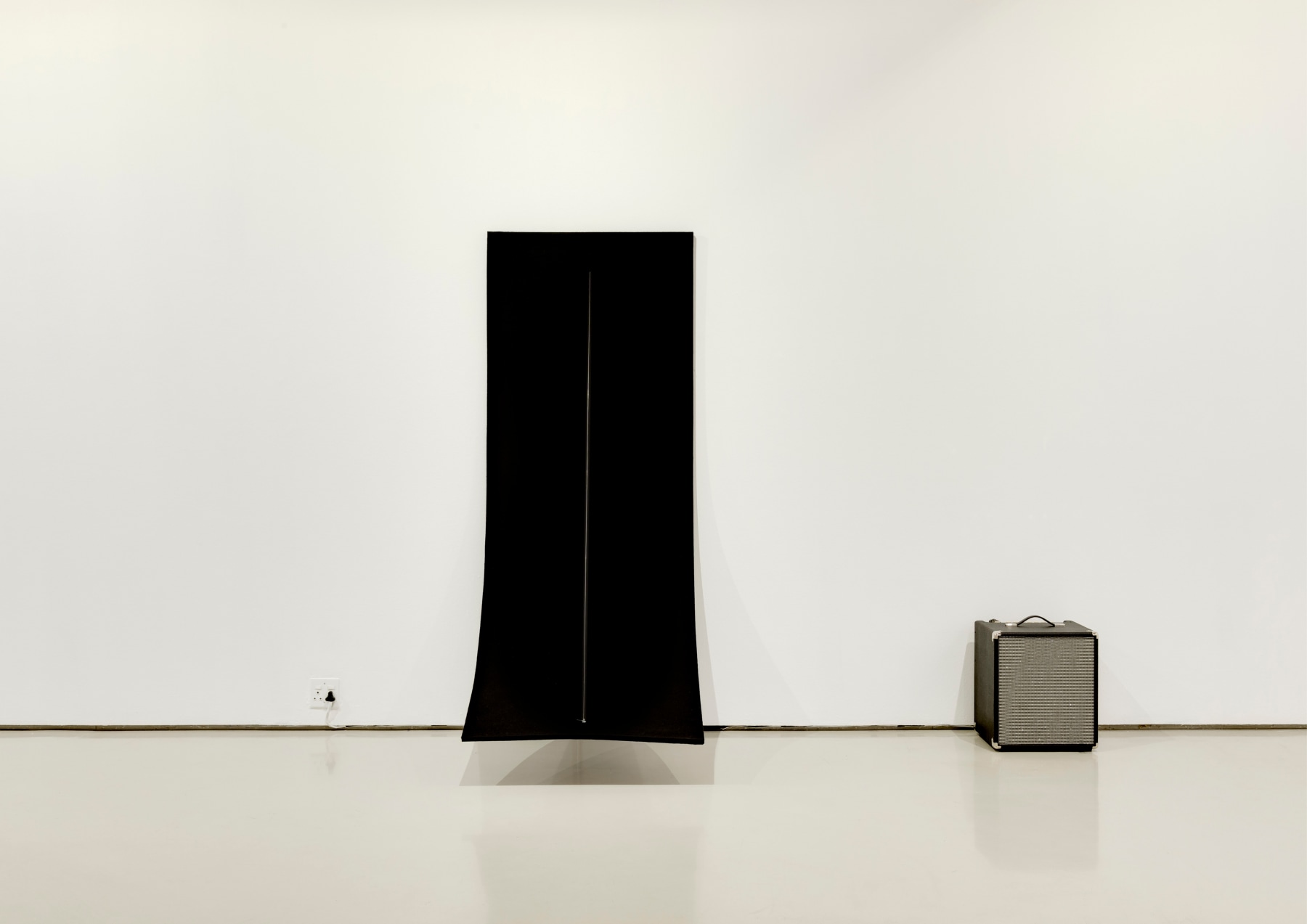
Jeremy Wafer (b. 1953, Durban, South Africa) works across sculpture, photography, video and drawing, exploring the politics and poetics of place. Rooted in South Africa’s social, cultural and political geography, his work engages issues of land and territory, particularly themes of location, dislocation, possession and dispossession.
According to critic Sean O’Toole, Wafer’s practice is “striking in its responsiveness to the particularities of South Africa’s land” (This is no place for lovely pictures, 2022). Indeed, throughout his forty-year career, Wafer has employed topographic and oceanic references to consider the geological and sociohistorical realities and imaginaries that surround his sites of investigation. This body of work stems from Wafer’s decades-long exploration of dislocation, memory and materiality.
Solo exhibitions: Arc, Goodman Gallery, London (2022); Index, Goodman Gallery, Cape Town (2017); Goodman Gallery, Johannesburg (2014); Structure: Avenues and barriers of Power, a retrospective at KZNSA Gallery, Durban (2009).
Group exhibitions: Centre of Gravity, The Old Soap Works, Bristol (2020); Ampersand, University of Johannesburg Art Gallery, Johannesburg (2019); Everywhere but Here, Cite International des Arts, Paris (2017); What remains is Tomorrow, The Pavilion of South Africa at the 56th Biennale di Venezia, Venice (2015); Witness, Linden Centre for Contemporary Art, Melbourne (2014); Views of Africa, Smithsonian National Museum of Air and Space, Washington DC. (2013); and 20: Two Decades of South African Sculpture, NIROX Foundation, the Cradle of Humankind, (2010).
Wafer’s work features in the following public collections: the National Museum of African Art, Smithsonian Institute in Washington DC; South African National Gallery in Cape Town and the Johannesburg Art Gallery.
Wafer lives and works between London and Johannesburg.
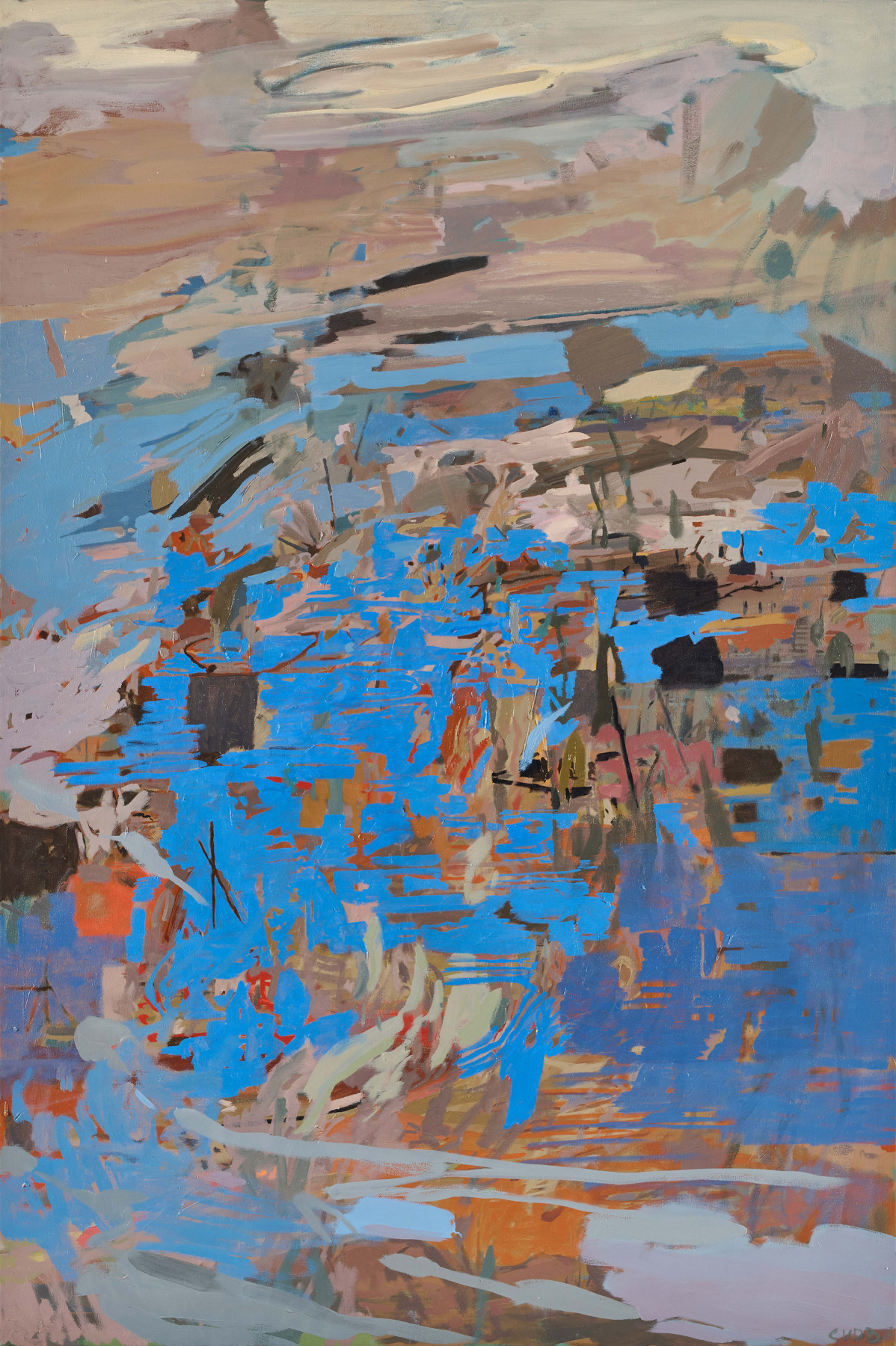
Clive van den Berg
Landscape Marked IV, 2024
Oil on canvas
Work: 180 x 120 x 5 cm (70.9 x 47.2 x 2 in.)
Unique
Clive van den Berg (b. 1956, Zambia) has focused on pioneering the insertion of queer perspectives into the larger rewrite of South African history throughout the course of his prolific forty-year career. Van den Berg has produced a range of works unified by his enduring focus on five interrelated themes: memory, light, landscape, desire and body.
Van den Berg’s retrospective, titled ‘Porous’, opens at the Wits Art Museum on 27 August 2024 and is followed by a major new book published by Skira later in the year.
‘Landscape Marked IV’ continues his engagement with the idea of the land as a porous receptacle for lived experience. In this work the artist continues to reflect on his own complex relationship to landscape, communicating a more visceral articulation of this engagement. This is embedded in the quality of the paint as much as the construction of the paintings and the abstract imagery that emerges on the canvas.
Solo exhibitions include ‘Remembering’, a survey exhibition of paintings, prints and sculptures at the Kwa-Zulu Natal Society of Art Gallery, Durban (2021); ‘Personal Affects’, Museum of African Art, New York (2005). Major curated exhibitions include ‘If You Look Hard Enough, You Can See Our Future: Selections of Contemporary South African Art from the Nando’s Art Collection, The African American Museum of Dallas, Dallas (2023); Breaking Down the Walls: 150 years of Art Collecting, Iziko SANG, Cape Town (2023); Screening of Memorials Without Facts: Men Loving, São Paulo Museum of Art, São Paulo (2018); Earth Matters: Lands as Material and Metaphor in the Arts of Africa, Smithsonian National Museum of African Art, Washington D.C. (2013-2014).
Collections include: El Espacio 23, Miami; Amant Foundation, New York; A4 Arts Foundation, Cape Town; Wits Art Museum, Johannesburg; Spier Arts Trust, London; Iziko South African National Gallery, Cape Town; Smithsonian Museum of African Art, Washington DC and Video Brasil, São Paulo.
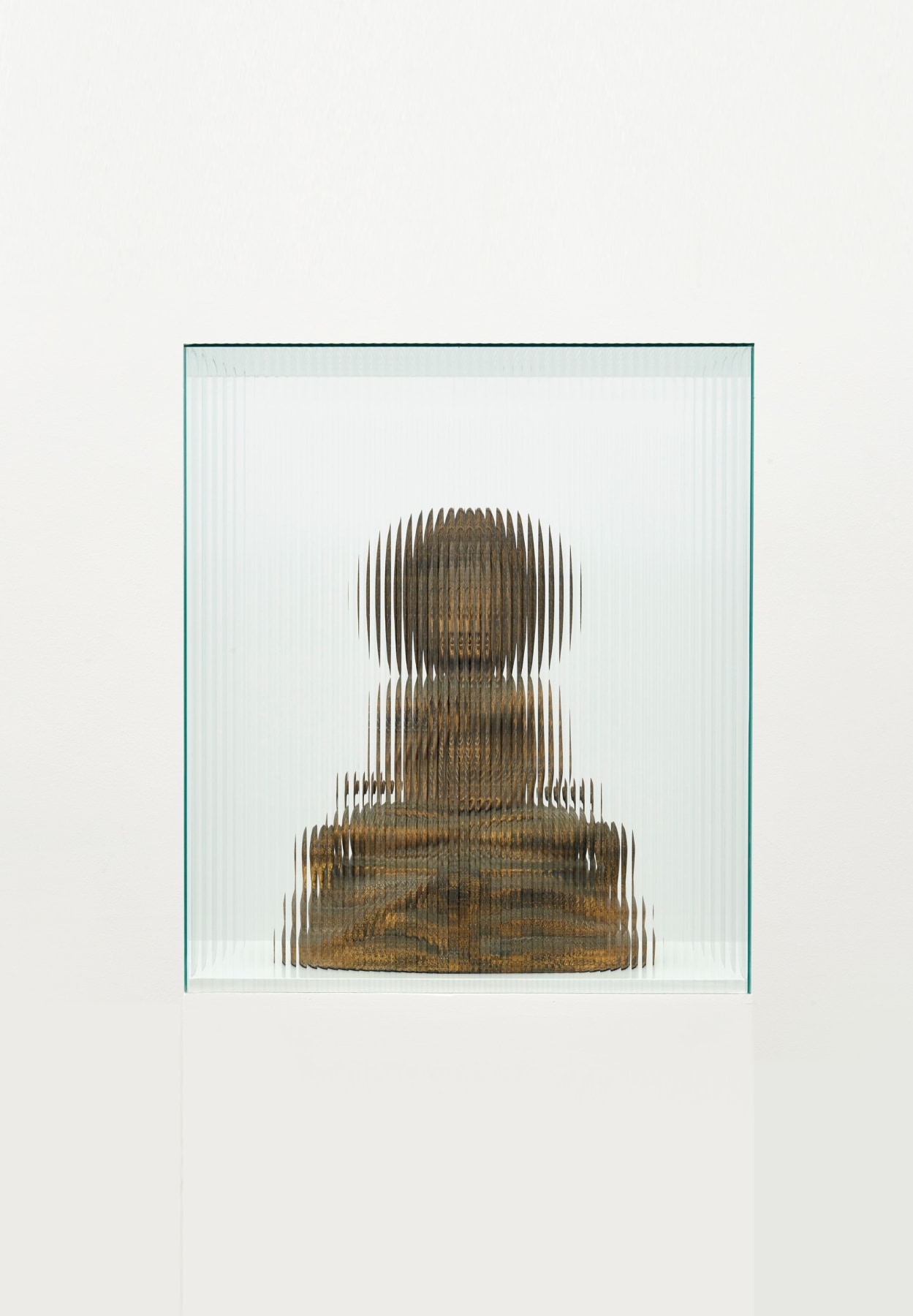
James Webb
This is where I leave you (Radiant guide.
Equanimity in the harsh storm), 2020
Brass Buddha statue, vitrine, plinth
161 x 46 x 64 cm (63.4 x 18.1 x 25.2 in.)
Unique
James Webb (b.1975, Kimberley) is an interdisciplinary artist, known for his site-specific interventions and installations. His practice often involves sound, found objects, and text, invoking references to literature, cinema, and the minimalist traditions. By shifting objects, techniques, and forms beyond their original contexts and introducing them to different environments, Webb creates new spaces of tension. These spaces bind Webb’s academic background in religion, theatre, and advertising, offering poetic inquiries into the economies of belief and dynamics of communication in our contemporary world.
In the series ‘This is where I leave you’, found objects serve as placeholders in a retelling of the story of the Nossa Senhora dos Milagros shipwreck encased in vitrines made of fluted glass. The 1686 shipwreck along the Cape Agulhas coast was an important moment in the history of religion in South Africa. This accident brought Catholicism and Buddhism into contact with the recently colonised, Lutheran Cape: a twist of fate that would have bizarre and poetic consequences. The effect of the fluted glass on our view of the objects appears to fragment and divide them; the static pieces look to be vibrating, or even radiating. The glass becomes a lens as well as a veil that disconnects, obscures and mystifies: the unity of the recognised form remains out of reach. The choice of found objects relates to how the artist imagines and reimagines the scenario of the story: the objects are sites for projection and interpretation, and are here presented as being in a shimmering state.
